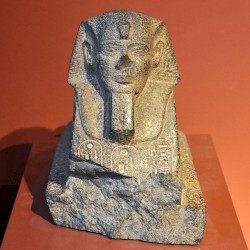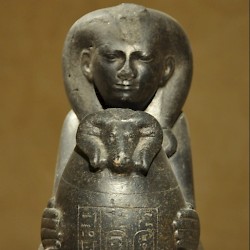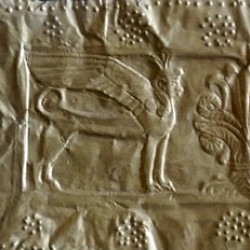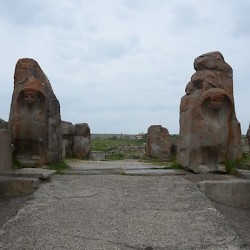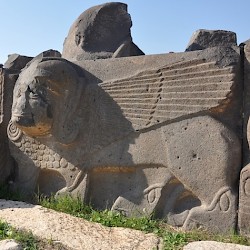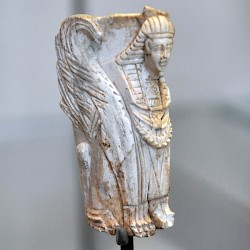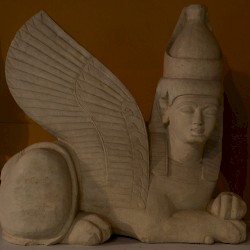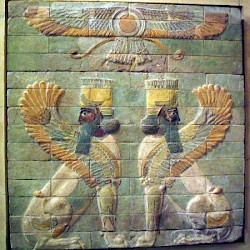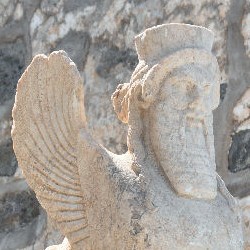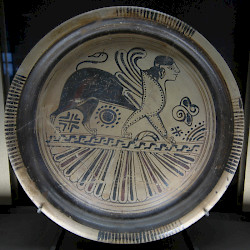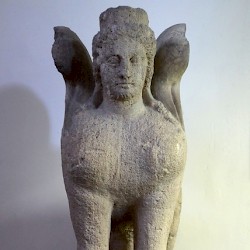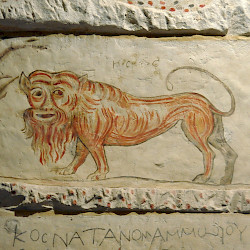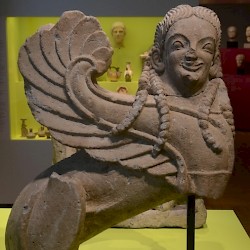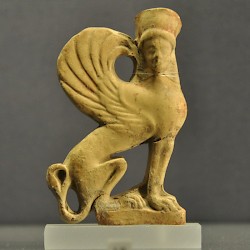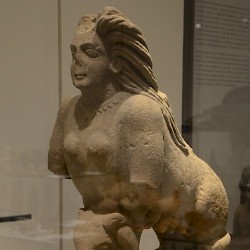Sphinx
Sphinx (Greek: Σφίγξ): mythological creature with the body of a lion and a human head.
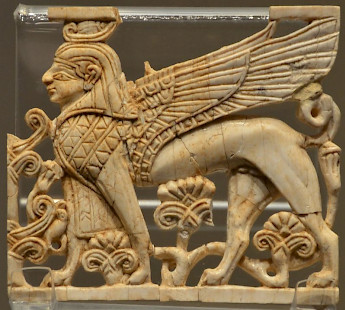
Like the Chimaera, the Lamassu, the Griffin, and the Minotaur, a sphinx is a mythological creature that combines elements from real animals: it has the body of a lion and a human head. Sphinxes are known from ancient Egypt (the one in Giza being world famous), from Hittite Anatolia (gatekeepers at Alaçahöyük and Hattusas) from Bronze Age Cyprus (Enkomi), from Syria (the orthostats of Ain Dara), from Phoenicia, from Greece, from Sicily, and from Etruria (Vulci). In the ancient Near East, they usually guarded the Tree of Life.
In the Persian Empire, sphinxes were often shown next to the representation of the supreme god Ahuramazda. The association with monarchical govenment, which we see in the many sphinx-like portraits of Egyptian kings, was known to the Romans as well: an example is the arch of Marcus Aurelius in Oea (modern Tripoli).
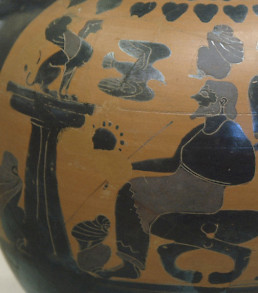
According to the Greek poet Hesiod, there was only one sphinx, who was a child of Chimaera and Orthus, and was the twin of the Nemean Lion.note This sphinx was represented on the helmet of Phidias' statue of the goddess Athena in the Parthenon on the Athenian Acropolis. Sphinxes - plural - also decorated the statue of Zeus in Olympia, created by the same sculptor.
The most famous story about a sphinx is the one about Oedipus, who traveled to Thebes, which he found besieged by the mythological creature. The sphinx had a famous riddle:
What has four feet in the morning, two feet in the afternoon, and three feet in the evening?
People who did not know the answer, were killed (a common fairy-tale motif). Oedipus, realizing that the answer was "a human being", walked away safely and became king of Thebes (again the monarchic connection), and the sphinx killed itself. There is still a hill, west of Thebes, called Sphinx Hill.

